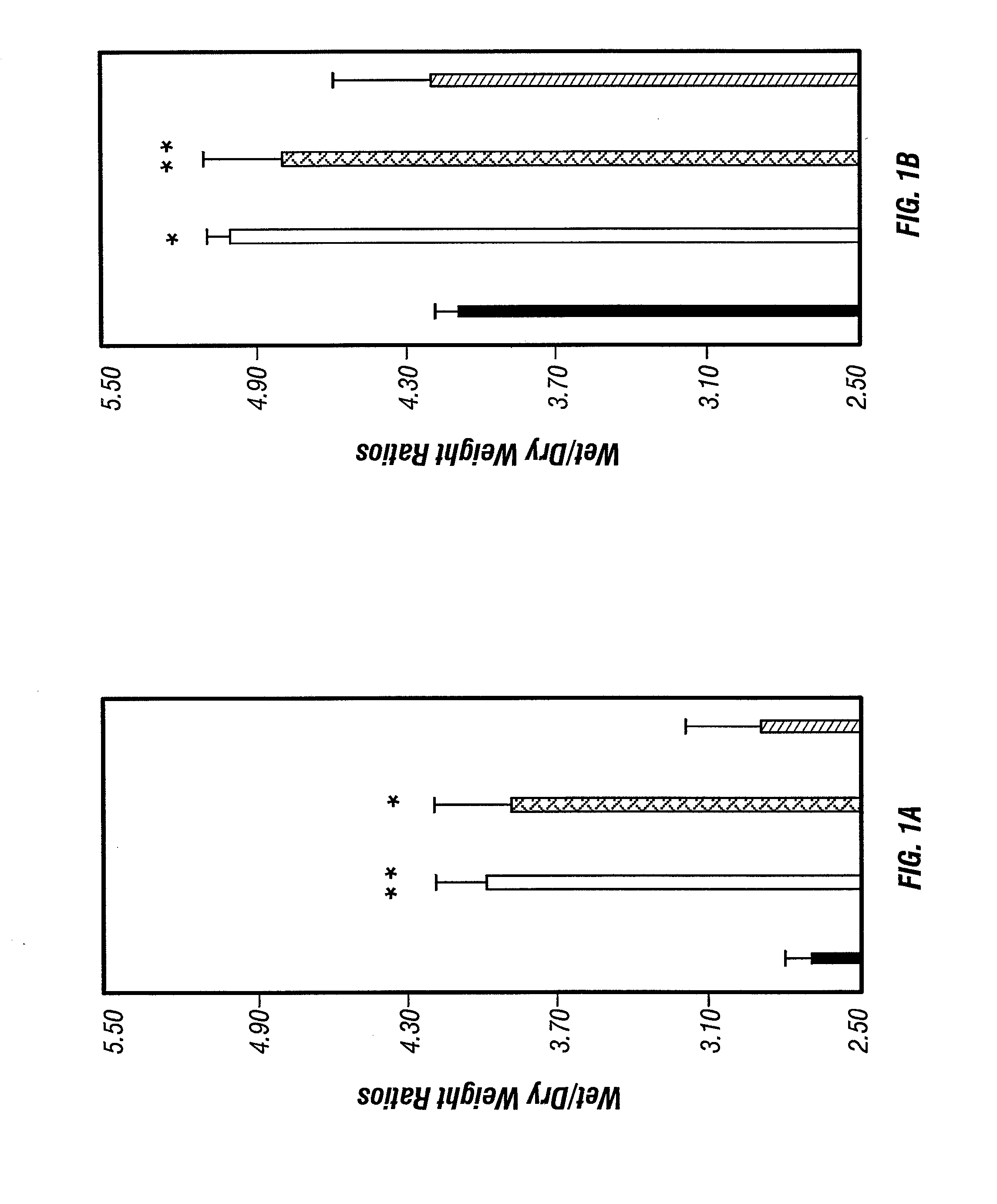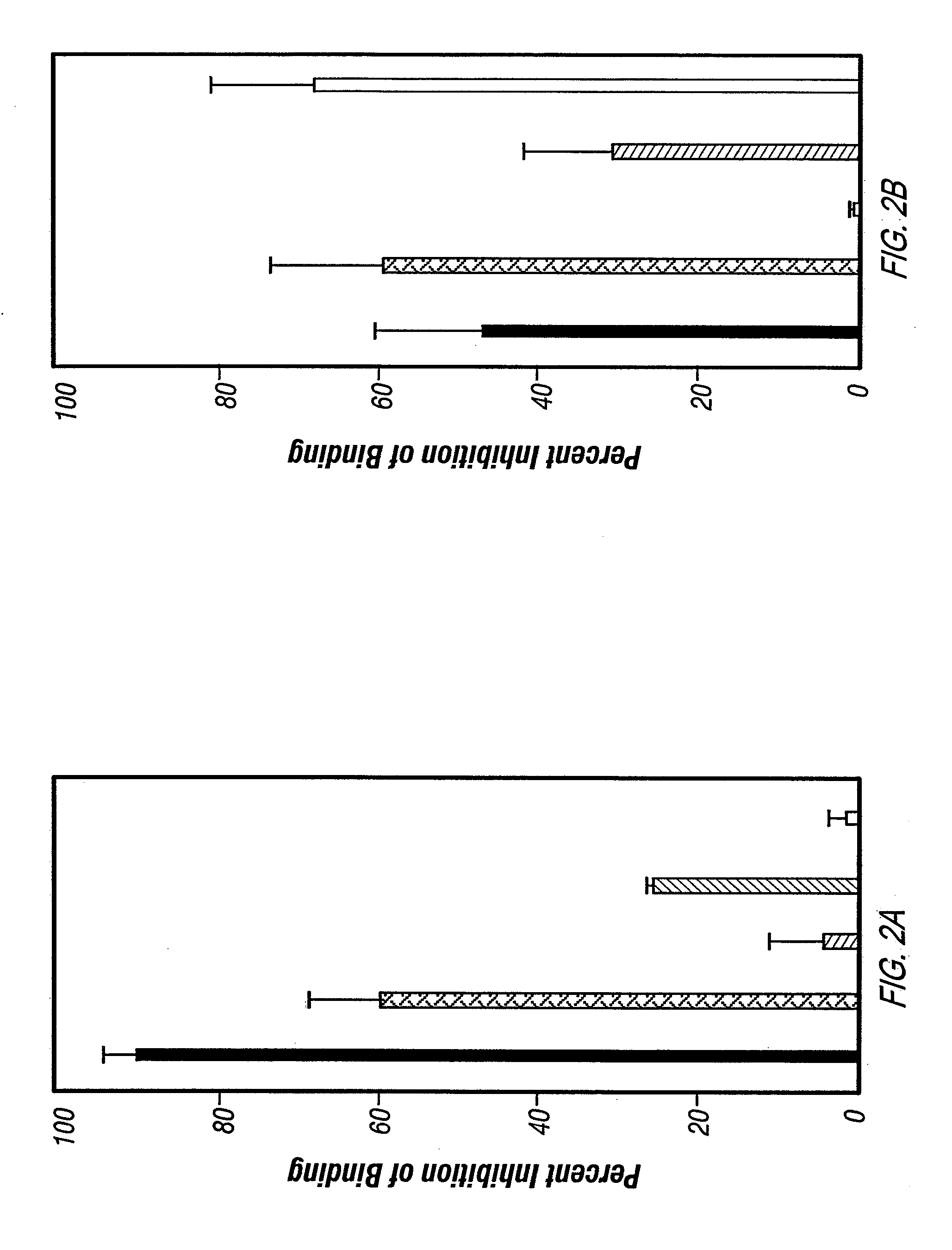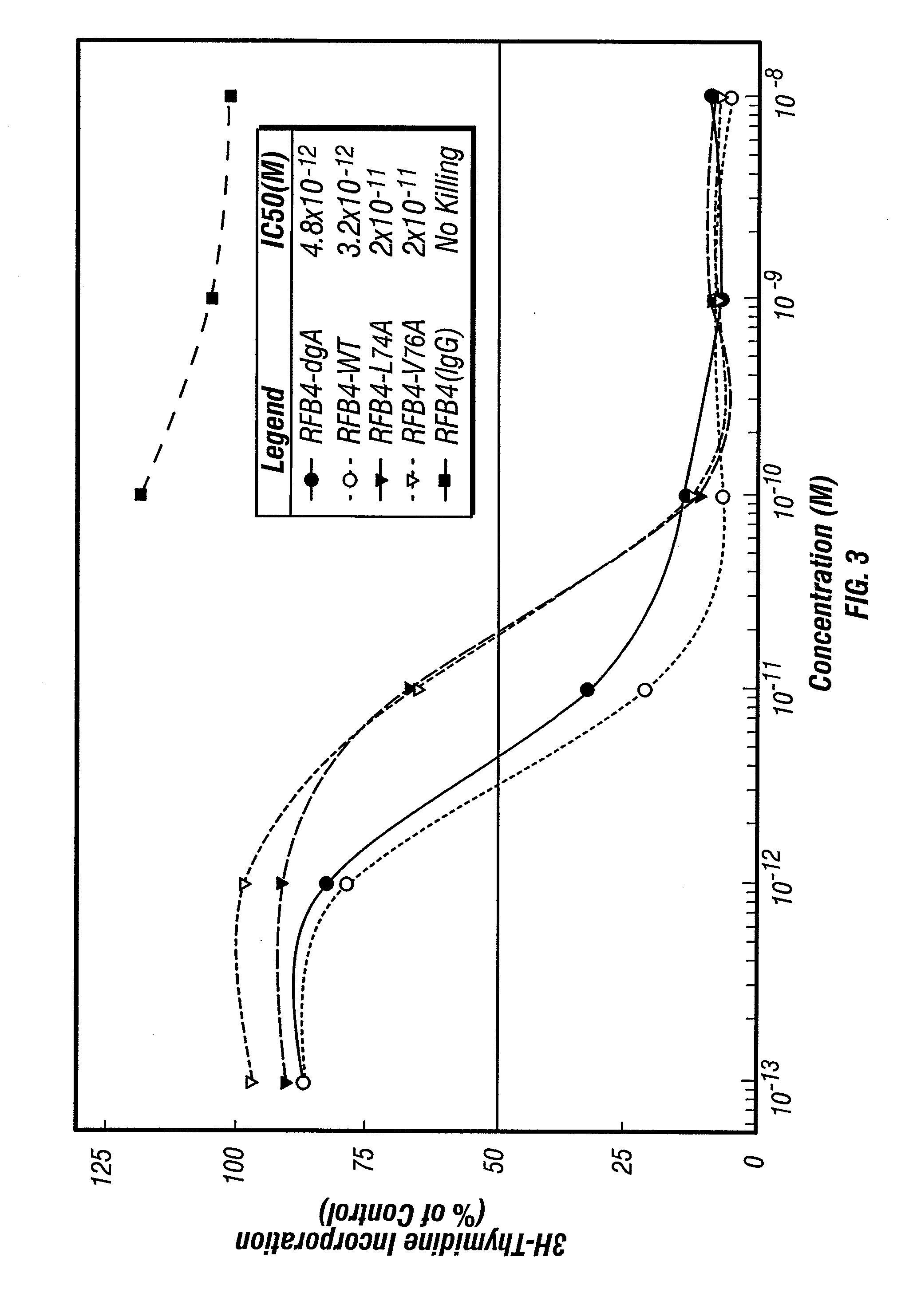Ricin a chain mutants lacking enzymatic activity as vaccines to protect against aerosolized ricin
a technology of ricin and ricin, which is applied in the field of vaccines to protect animals, and achieves the effect of reducing or eliminating one toxic effect, reducing or eliminating a toxic catalytic activity
- Summary
- Abstract
- Description
- Claims
- Application Information
AI Technical Summary
Benefits of technology
Problems solved by technology
Method used
Image
Examples
example 1
Structural Motif for Initiating Vascular Leak Syndrome
[0260]This example demonstrates that a three amino acid sequence motif, (x)D(y), in toxins and IL-2 is responsible for damaging vascular ECs. Short (<20 amino acid) (x)D(y) motif-containing peptides from RTA or IL-2 which contained flanking glycine residues and an N-terminal cysteine residue, as well as peptides with deleted or mutated sequences, were generated. These peptides were separately attached via the cysteine residue to a mouse IgG1 Mab (RFB4) not reactive with HUVECs. The VLS-inducing ability of these IgG-peptide conjugates in three VLS model systems were compared. The first model system was in vitro damage to human umbilical endothelial cells, (HUVECs) (Soler-Rodriguez et al., 1993); the second was in vivo fluid accumulation in mouse lungs (Baluna and Vitetta, 1996); and the third was in vivo fluid accumulation in human skin xenografts in SCID mice (Baluna and Vitetta, 1998).
example 2
Reduced Pulmonary Vascular Leak in Mice
[0265]In this example, it was demonstrated that the enzymatic site or the putative VLS-inducing site in RTA can be mutated without effecting the activity of the other site. The results showed that an active site mutant (E177D) induces EC damage and pulmonary vascular leak while one particular LDV mutant (L74A) makes an active IT but does not induce this damage. Thus, a single amino acid change (L74A) yields an RTA with the desirable properties of IT activity with reduced vascular damage. These results demonstrate that it is now possible to generate an effective RTA-containing IT which does not cause VLS.
[0266]Plasmids and mutagenesis. It has been shown that E177 in RTA is one of several amino acids involved in the active site and that an E177D mutant has greatly reduced enzymatic activity. The pKK223 plasmid comprises the wt RTA gene and the pUC 18 plasmid comprises the E177D mutant RTA gene, both under IPTG-inducible control (O'Hare et al., 19...
example 3
[0280]To test the ability of dgA (deglycosylated ricin A chain) and dgA derivatives to inhibit protein synthesis in a cell free system.
[0281]The following solutions were prepared on a large scale and can be used for multiple assays as long as they are kept sterile.
[0282]1 mM hemin was prepared by dissolving 16.3 mg bovine heart hemin and 90 mg KCl in 2.5 ml of 0.2 M Tris, pH 8.2. The solution was brought to 25 ml with ethylene glycol, with the final pH being 8.2. The solution was stored in 100 μl aliquots at −70 C.
[0283]0.2 M phosphocreatine was prepared by dissolving 255 mg phosphocreatine in 5 ml double distilled water. The solution was stored in 300 μl aliquots at −20° C.
[0284]5 mg / ml creatine phosphokinase, type III bovine heart, was prepared by dissolving the entire contents of a vial by pipetting directly into the vial a mixture of 50% sterile double distilled water and 50% sterile glycerol to a final concentration of 5 mg / ml. The numbers of mg of creatine ph...
PUM
| Property | Measurement | Unit |
|---|---|---|
| temperatures | aaaaa | aaaaa |
| pH | aaaaa | aaaaa |
| weight ratios | aaaaa | aaaaa |
Abstract
Description
Claims
Application Information
 Login to View More
Login to View More - R&D
- Intellectual Property
- Life Sciences
- Materials
- Tech Scout
- Unparalleled Data Quality
- Higher Quality Content
- 60% Fewer Hallucinations
Browse by: Latest US Patents, China's latest patents, Technical Efficacy Thesaurus, Application Domain, Technology Topic, Popular Technical Reports.
© 2025 PatSnap. All rights reserved.Legal|Privacy policy|Modern Slavery Act Transparency Statement|Sitemap|About US| Contact US: help@patsnap.com



